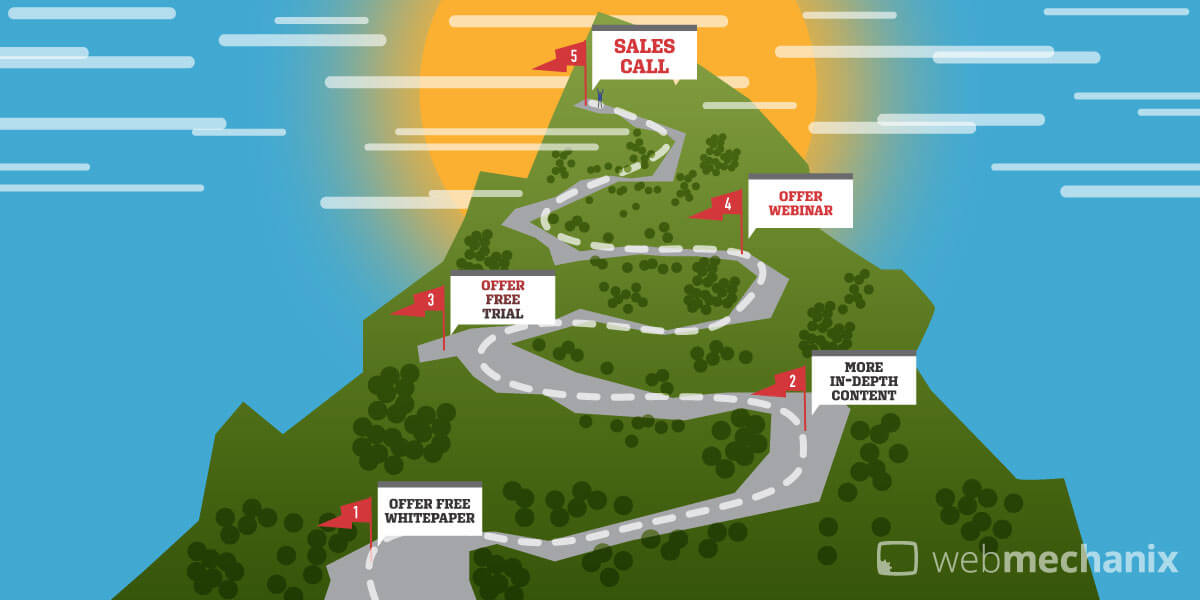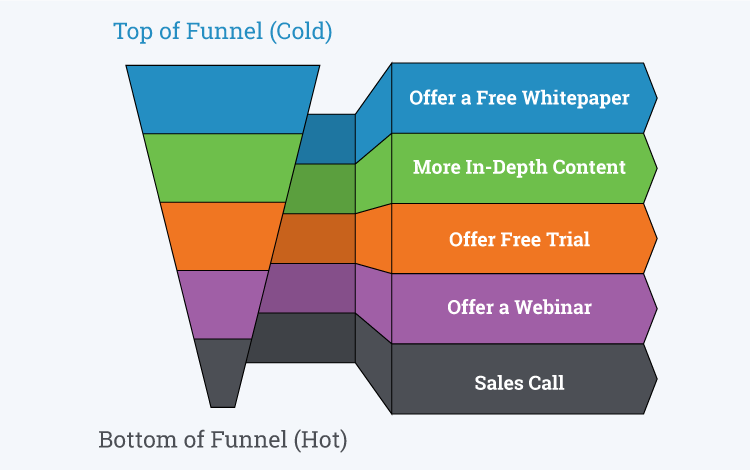
4 tips to build an effective B2B SaaS content strategy
It’s overwhelming trying to handle all the advice online. You’ll find yourself drowning in a sea of articles on B2B SaaS content strategy and millions more on online marketing. Where do you even start? It makes you want to drop dead.
You don’t have the time to read it all. But there is hope. You can get the results you want in less time.
That’s why we have this short-and-sweet post—the only one you’ll need—on SaaS marketing tactics.
No B.S. No hype. This info is straight from our best software clients.
1. Frequent, valuable blog posts around themes for SEO
The first marketing tactic that works wonders for B2B SaaS inbound marketing is to create frequent, high-value blog posts. An important part of the SaaS business strategy here is creating blog posts around a solid theme. Jumping between different B2B SaaS ideas for every article confuses Google’s search algorithm; we call this blind blogging.
By sticking to a specific topic for a series of posts, we help Google understand what our blog is about. We recommend sticking to a theme for one month or at least two weeks before switching to another theme. To illustrate, let’s say you write two blog posts a week for your software company, and your product provides business communication solutions. For one month, you can publish content around a theme of productivity; next month, you can publish blog posts around the theme of better writing and grammar for communication.
We write half our posts on industry news as a thought leader and the other half on case studies that readers can genuinely learn and benefit from.
Another huge part of our success came from post frequency. We achieved an almost linear increase in search engine traffic by doubling how often we posted.
Neil Patel is a marketer who has grown multiple blogs from zero to millions of visits per month. He had seen the same trend when he increased his post frequency. But he warns that it only works if you can maintain the quality of your posts.
By having more posts to choose from, we also increased the average number of pages a visitor would view because they found plenty of related content interesting as well.
2. Use a product wizard “self-selection” quiz
This wizard is a quiz that asks users tailored questions based on previous responses. At the end of the quiz, it gives you personalized feedback based on your answers.

Here’s why it works:
- Users perceive themselves as getting a better answer because it’s personalized to their specific situation.
- Users get a unique experience. They haven’t experienced an opt-in form like this one before, or at least not as frequently. They walk away thinking, “Now this is the right answer for me!”
- Users are more likely to fill it out (higher conversion rate) and trust in the answer more than they normally would because it seems more personalized.
The difference between a product wizard quiz and a free e-book is like choosing between:
- Getting a generic nutrition recommendation from a web page.
- Having a dietician look at your genetics, find out your goals, and give you a personalized meal plan.
We’ve successfully used these “self-selection quizzes” and achieved conversion rates from 20% to 40% for B2B SaaS marketing. Compared to the industry average conversion rate of 1 or 2%, the quiz conversion rate speaks for itself.
3. Understand and optimize the long sales cycle
For typical enterprise software, your product’s price is high, and your sales cycle is long. If you want to learn how to market B2B SaaS, you should understand what it means when it takes over six months between when prospects find out about you and when they decide to buy.
It’s important to acknowledge the long sales cycle and improve your process around that by properly nurturing and educating the prospect over time.
The car industry is a great example. Most people don’t buy a car on impulse. They want time to research the options and find what suits them best.
Now, a big part of a good nurturing process is understanding the customer journey funnel. As a quick refresher, a prospect who is higher in the marketing funnel is still in the research and browsing stage. As he moves down the funnel, he gets to a stage where he’s educated and deciding which software to buy.

Here’s an example of a typical customer journey:
- A prospect finds us on Google during a “top of the funnel” customer stage. We give him a freebie, like a white paper that educates him.
- We nurture him over email with content on broad, top-level topics over a couple of months.
- We move to more specific topics that explain how we’re different.
- Finally, we move to more “hot, lower funnel” actions like a webinar.
- We might follow up with remarketing ads as a final touch.
- The prospect is ready to buy. We start our discussion with a sales call.

Because of the long sales cycle, we’ve found that patiently educating prospects about the industry with valuable content works best.
4. Understand the importance of data clarification
Data clarity will make everything much easier for you and your boss(es). You’ll be able to show the return on your budget with crystal clarity and zero in on what worked so you know what to double-down on.
Data clarity seems like common sense, but common sense isn’t so… common. Most CMOs already understand the importance of clean data because they’ve heard the saying “garbage in, garbage out,” meaning the quality of your report is only as good as the accuracy of the data it uses.
But they have trouble putting data clarity into practice because priorities get shifted, the organization doesn’t care as much, or they don’t know how to with all these different data sources and reporting tools.
Fortunately, we can proudly claim that data analytics tracking is one of our strengths as an agency. It’s a topic for its own article, and we have a few resources to get you started. You’ll learn how to make sense of all the data and prove ROI to your boss:
- How to prove ROI in digital marketing
- How to measure B2B marketing campaign effectiveness from HubSpot to Salesforce
- How to tidy up analytics, traffic, and conversion for the new year
- 3 mistakes that can derail your B2B website visitor tracking efforts
Conclusion
Here’s what we’re doing for our B2B SaaS content strategy that’s turning into sales for our clients:
- Creating frequent, value-packed content on themes for SEO.
- Testing out a “self-selection quiz” as an opt-in form.
- Acknowledging the longer sales cycle and nurturing prospects to become red-hot fans over time.
- Clarifying and tracking our data.
It’s one thing to get a whole list of all the SaaS marketing tactics you can try. It’s another thing to learn what actually produces the results. These four tips will get you far.
Now, we’d love to hear from you. What’s worked best and worst in your industry? What will you try from this list? What wasn’t mentioned that’s working wonders for you?
Most newsletters suck...
So while we technically have to call this a daily newsletter so people know what it is, it's anything but.
You won't find any 'industry standards' or 'guru best practices' here - only the real stuff that actually moves the needle.







